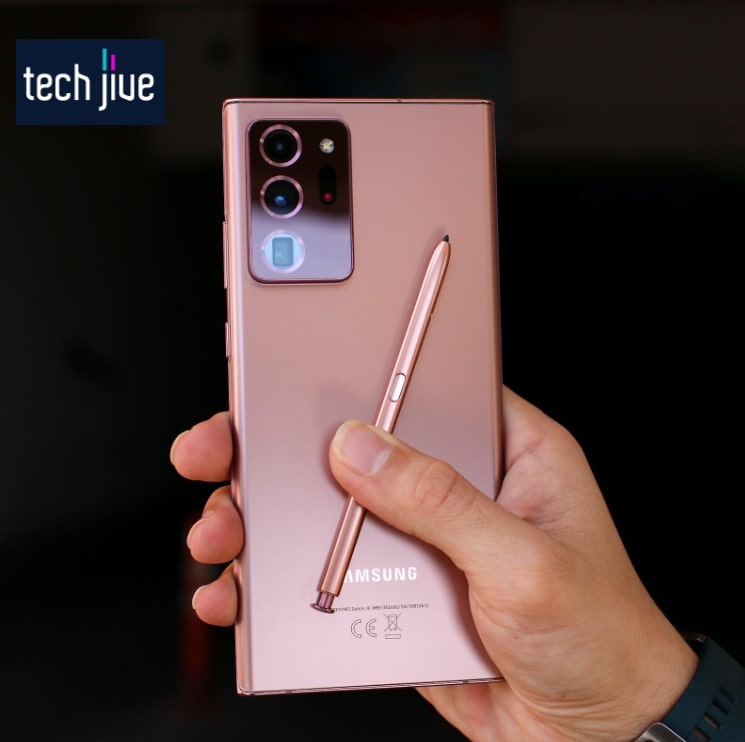
Many Samsung Galaxy Note 20 Series users seem to be experiencing overheating issues even when doing the simplest tasks.
Several factors, like long usage or hardware-related issues, may cause overheating issues on the Galaxy Note 20 and Note 20 Ultra. Thankfully, fixing it can be as simple as closing apps or updating settings.
But there’s more. Here, we’re not just giving you the other common reasons why a Note 20 overheats, but we’re also showing you how to fix overheating issues of the Galaxy Note 20/Note 20 Ultra quickly.
| Difficulty | Very Easy ●○○○○ |
| Duration | 15 minutes |
| Things You Need | Samsung Galaxy Note 20, or Samsung Galaxy Note 20 Ultra |
Why is my Samsung Galaxy Note 20/Note 20 Ultra heating up?
Galaxy devices will generate heat while being used or undergoing the charging process. Listed below are common factors that cause the Galaxy Note 20 series to overheat.
- Using the Galaxy Note 20 series over the optimal operating temperature of 35 °C will cause battery damage and overheating.
- Using the Galaxy Note 20 series in long sessions will strain the processor, causing it to overheat.
- Using the device while being charged causes it to be hotter than normal.
- Exposing the device to any heat sources and direct sunlight is dangerous to the battery and may result in a fire hazard.
- Running power-intensive or multiple instances of applications will strain the processor, causing it to generate more heat..
- Using fake and uncertified accessories for charging causes damage to the battery.
- Using the device with an older software version makes it prone to overheating as it lacks battery performance enhancements.
How to Fix the Overheating Problem on Galaxy Note 20/Note 20 Ultra
1. Close all background apps.
| Difficulty | Very Easy ●○○○○ |
| Number of Steps | 3 |
| Duration | 5 seconds |
Apps that are minimized and running in the background will continue to consume battery power. Allowing multiple instances of apps to work will also take up space from the RAM and overload the processor, overheating the device.
By shutting down and closing these unused background apps, you should be able to fix pesky Galaxy Note 20/Note 20 Ultra overheating issues.
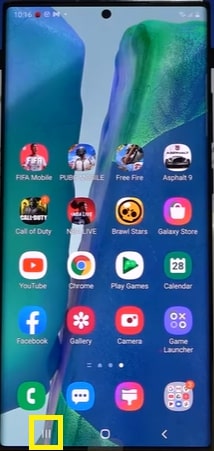
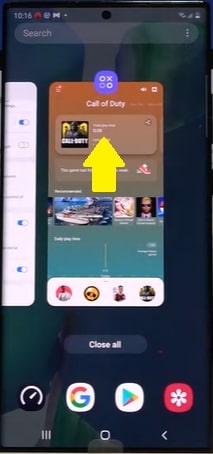
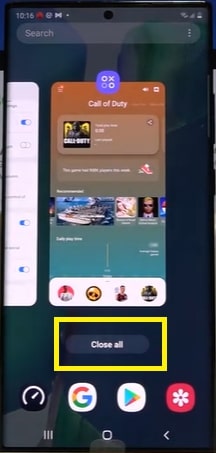
- Tap on Recents from your home screen.
- Swipe up on any app to close it.
- Click Close all to close all of the recently used apps.
2. Uninstall power-hungry apps.
| Difficulty Level | Very Easy ●○○○○ |
| Number of Steps | 4 |
| Estimated Time Completion | 45 seconds |
The surefire method of checking for any faulty app is to boot up safe mode on any device. This will temporarily disable all third-party apps, which can help you narrow down the culprit for the overheating issues on your Galaxy Note 20 series device.
Once you’ve confirmed that an app is causing the problem, uninstall it immediately so you can fix Galaxy Note 20 series overheating issues without delay.
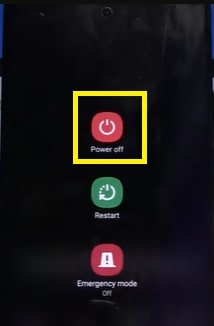
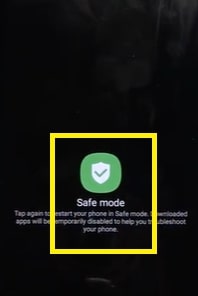
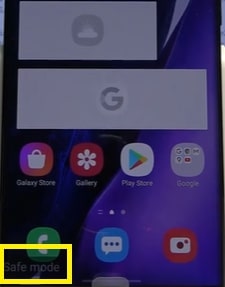
- Press/hold the side button.
- Tap/hold Power Off from the pop-up menu.
- Tap Safe Mode.
- Wait for the device to boot into safe mode.
Note: A text that says “Safe Mode” should be in the bottom left corner of your screen.
Once you’re in safe mode, use your phone normally to see if the overheating issue still persists. If you’re no longer experiencing overheating, that means that a third-party app is responsible for the problem.
Uninstall your suspected third-party apps. The culprits are usually the most recently installed application.
Uninstall the problem-causing app with these steps:
| Difficulty Level | Very Easy ●○○○○ |
| Number of Steps | 3 |
| Estimated Time Completion | 5 seconds |
- Tap/hold the app’s icon.
- Tap Uninstall on the pop-up window.
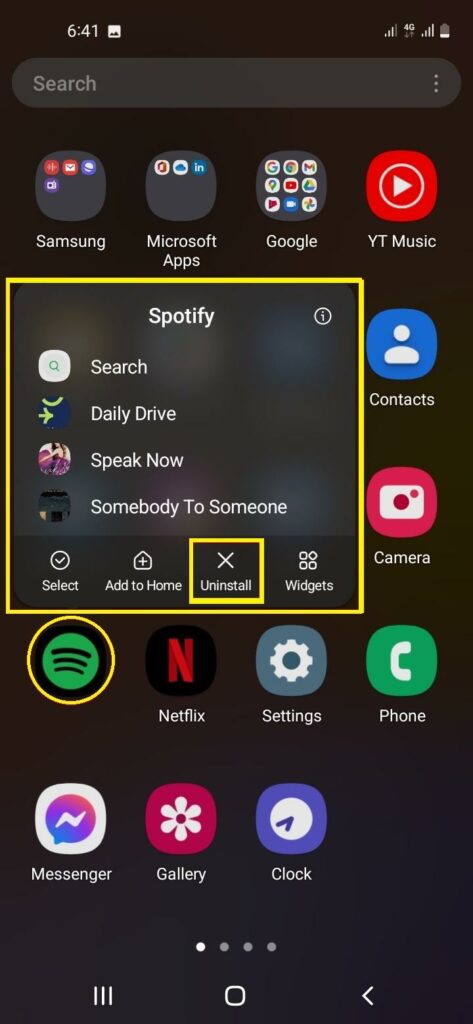
- Click Okay to uninstall.
Hold the side button to exit safe mode, click Restart on the pop-up menu, and wait for the device to boot back into normal mode.
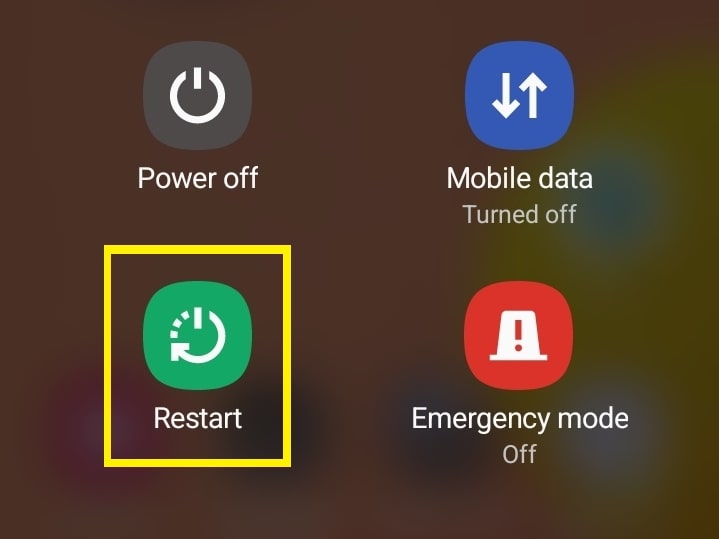
3. Update your apps.
| Difficulty Level | Very Easy ●○○○○ |
| Number of Steps | 6 |
| Estimated Time Completion | 2 minutes |
Applications start becoming power-hungry when they’re not updated regularly. Since updates improve the app’s performance, it’s paramount that you do this every time it’s available to ensure battery efficiency.
Follow the steps below to update apps:
- Open the Play Store.
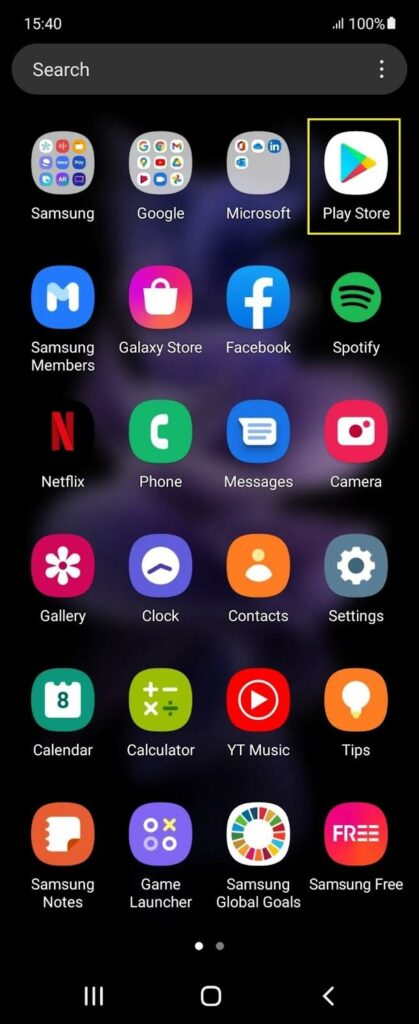

- Click your profile icon.
- Click Manage apps & device.
- Click Update available.
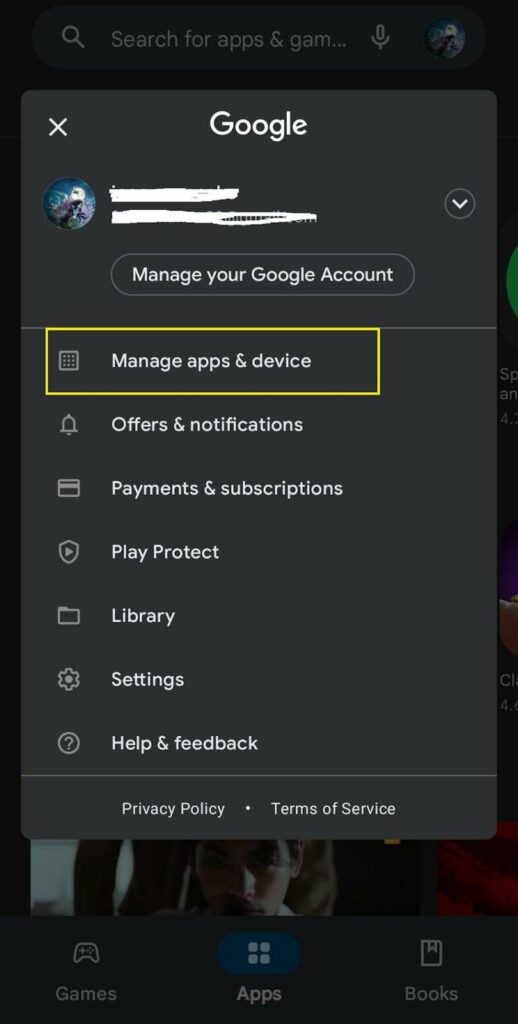
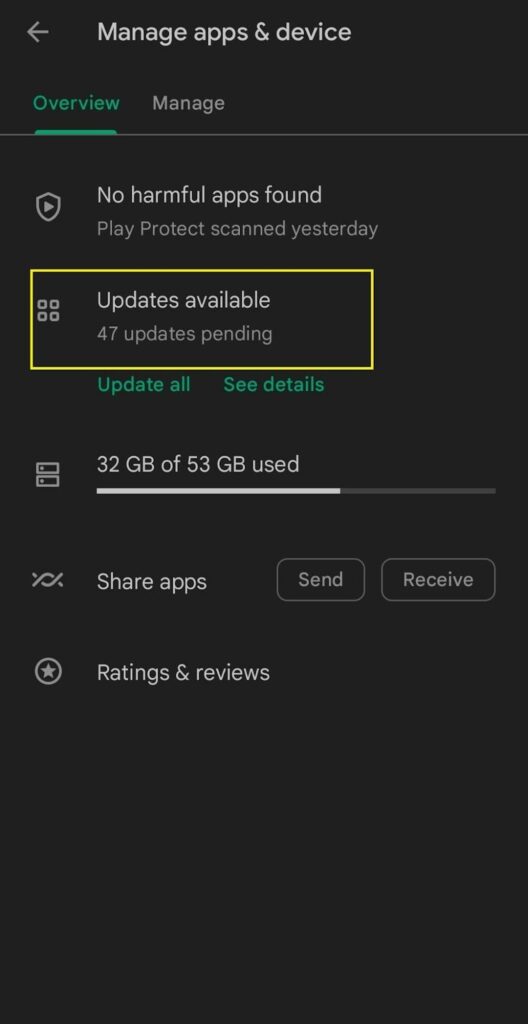
- Click Update beside the desired app to update it.
- Click Update all to download and install all available updates.
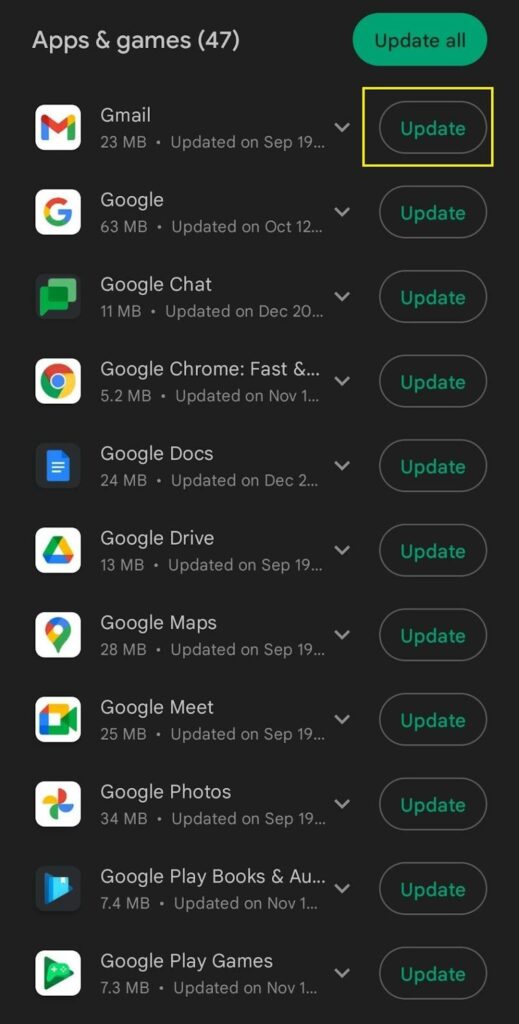
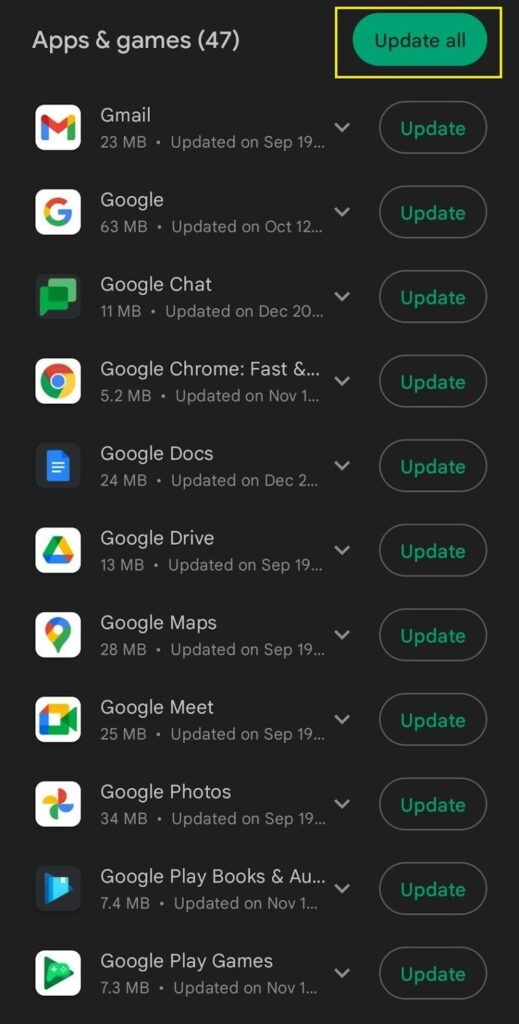
Note: In this method, we used the Play Store as an example, but you can also update your apps using the Galaxy Store.
4. Turn off unused network connections.
| Difficulty Level | Very Easy ●○○○○ |
| Number of Steps | 3 |
| Estimated Time Completion | 5 to 10 seconds |
When not in use, we recommend turning off your network connections such as Wi-Fi, Bluetooth, GPS, and mobile data as they are key contributors to power consumption even when the phone is idle.
In fact, Samsung support reports that 5G networks will drain your phone’s battery more quickly. As such, it’s advisable to disable unused network services, especially when you’re sleeping at night.
Follow the steps below to turn off network connections:
- Open Settings.
- Click Connections.
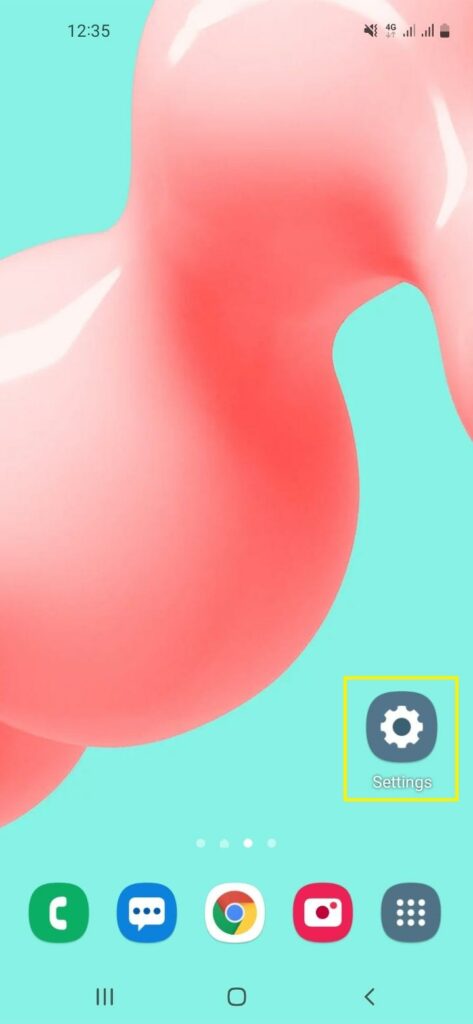
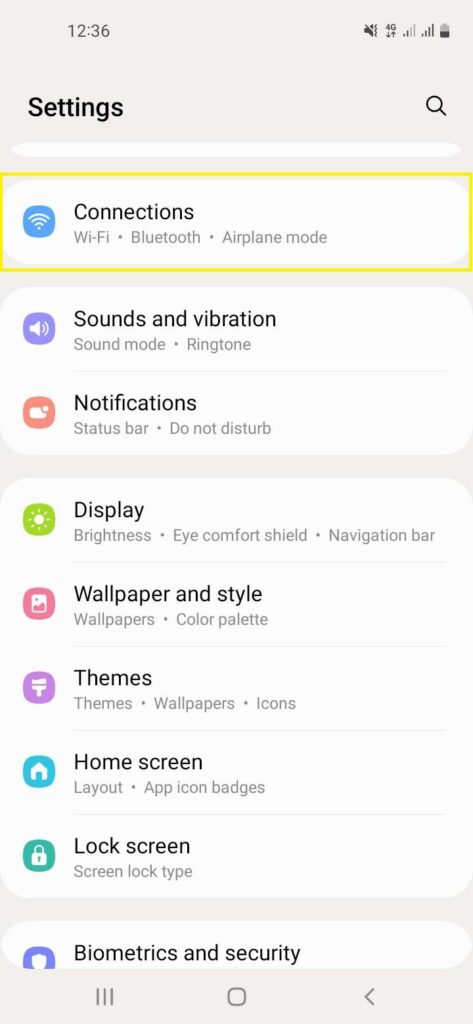
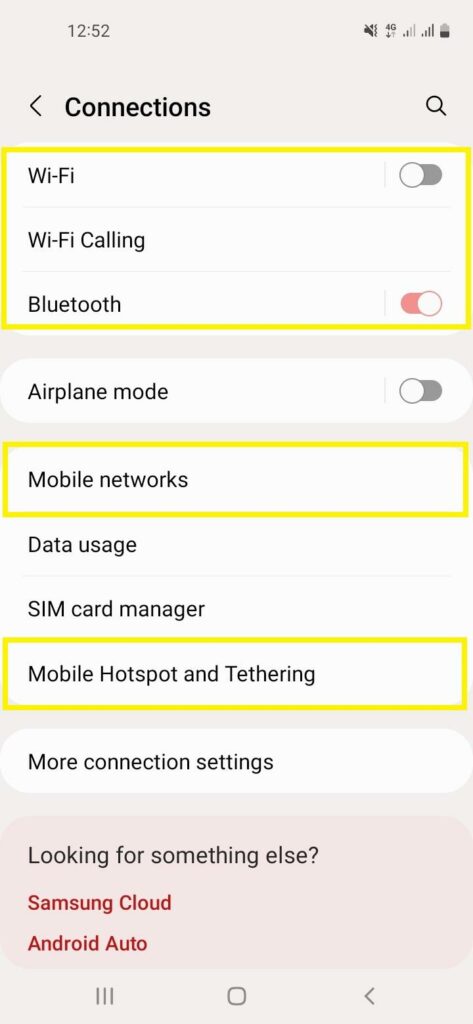
- Toggle off Wi-Fi, Bluetooth, etc.
Note: Alternatively, you can toggle airplane mode to temporarily disable all network services.
5. Adjust the device’s settings.
Setting your phone to work at its peak performance is the fastest way to make it hotter. While this allows for smooth operations, this can be dangerous for the battery and processor, especially during long sessions of use.
If possible, limit your phone’s functions and features to slow down battery consumption to lower the heat it generates. You can start by lowering the display’s brightness, frame rate, and resolution.
Follow these steps to lower the display’s brightness:
| Difficulty Level | Very Easy ●○○○○ |
| Number of Steps | 3 |
| Estimated Time Completion | 5 seconds |
- Swipe down from home.
- Swipe down once more to open the quick settings panel.
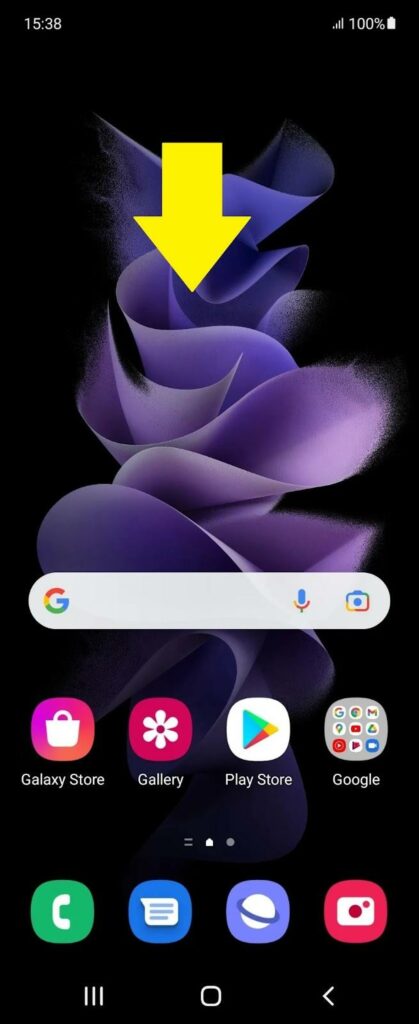
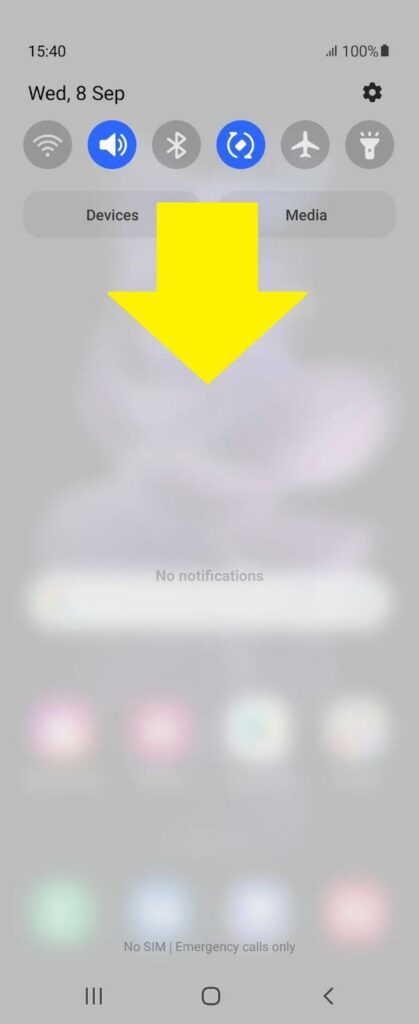
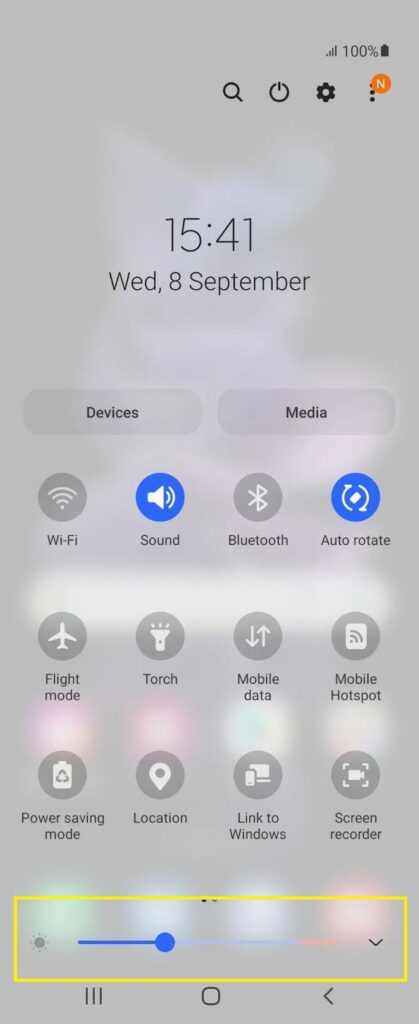
- Swipe the brightness bar left to lower brightness.
If you own the Samsung Galaxy Note 20 Ultra, the ability to adjust the resolution and frame rate is available for you. Read on to find out the steps for doing so.
Adjust the screen resolution for Galaxy Note 20 Ultra using these steps:
| Difficulty Level | Very Easy ●○○○○ |
| Number of Steps | 5 |
| Estimated Time Completion | 10 seconds |
- Open Settings.
- Click Display.
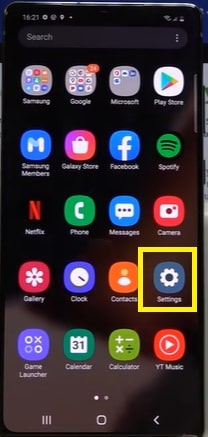
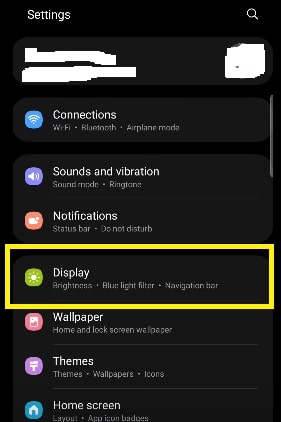
- Scroll down/click Screen resolution.
- Select HD+.
- Click Apply.
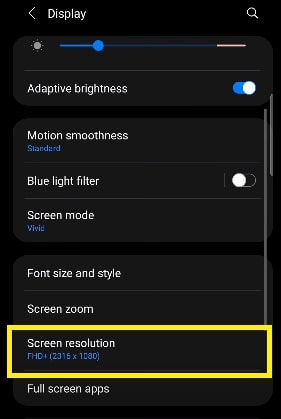
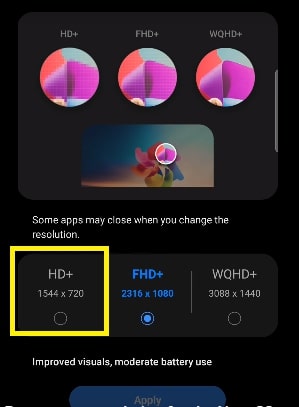
Note: HD+ is the most power-efficient resolution for the Galaxy Note 20 Ultra. Larger resolutions consume more power for better-quality visuals.
Lower the frame rate on the Galaxy Note 20 Ultra with these steps:
| Difficulty Level | Very Easy ●○○○○ |
| Number of Steps | 5 |
| Estimated Time Completion | 10 to 15 seconds |
- Open Settings.
- Click Display.
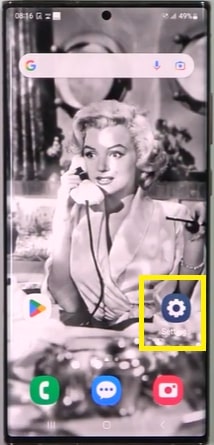
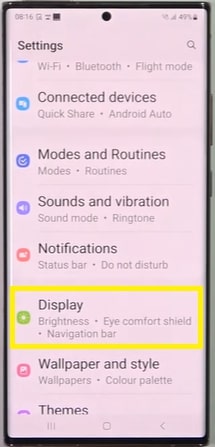
- Click Motion smoothness.
- Click Standard refresh rate (60 Hz).
- Click Apply.
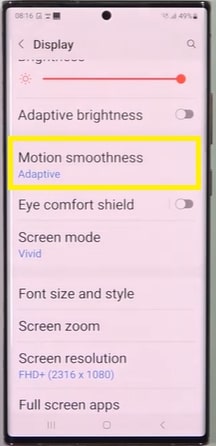
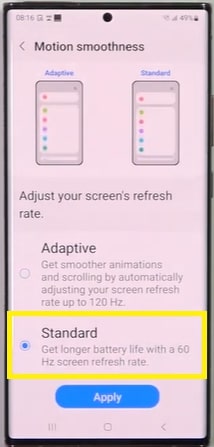
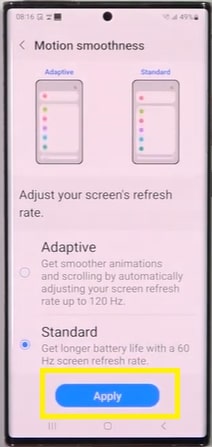
6. Reset the app preferences.
| Difficulty Level | Very Easy ●○○○○ |
| Number of Steps | 5 |
| Estimated Time Completion | 10 seconds |
In some cases, overheating can be caused by faulty app settings. To remedy this, you have to ascertain which app setting is the root cause, which can be difficult to determine most of the time.
Luckily, you can simply reset the preferences on your device to restore all of your default app settings.
Reset app preference using the steps below:
- Open Settings.
- Click Apps.

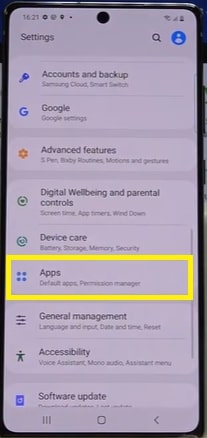
- Click the kebab menu (vertical 3-dot menu).
- Click Reset app preferences.
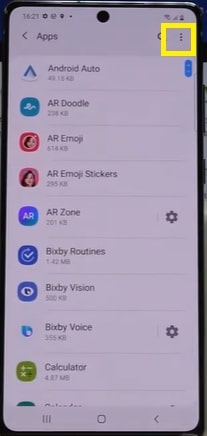
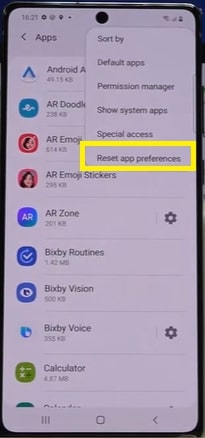
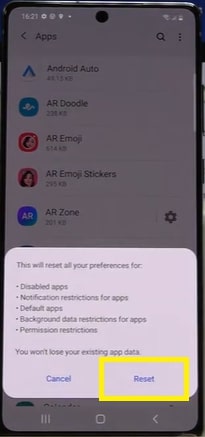
- Click Reset.
7. Use the power saving mode.
| Difficulty Level | Very Easy ●○○○○ |
| Number of Steps | 3 |
| Estimated Time Completion | 5 seconds |
Power saving mode is the most effective way to cut down on battery consumption. Since it limits the functionality and certain features on your phone, it’s also the most effective way to fix Galaxy Note 20/Note 20 Ultra overheating issues.
In fact, using the Power saving mode often is good for extending the lifespan of lithium-ion batteries in modern smartphones since they only have limited charging cycles.
Use the steps below to enable power-saving mode:
- Swipe down from home.
- Swipe down once more to open the quick settings panel.


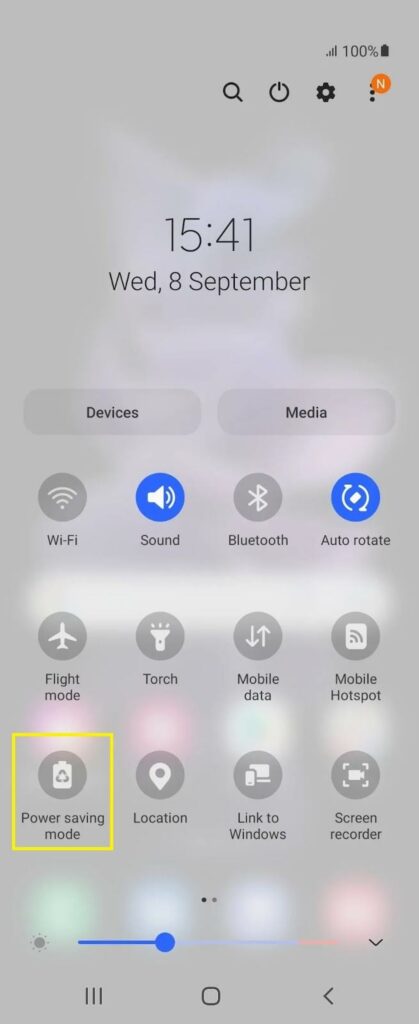
- Toggle Power saving mode on.
8. Clear the cache partition.
| Difficulty Level | Easy ●●○○○ |
| Number of Steps | 11 |
| Estimated Time Completion | 60 to 90 seconds |
The cache partition is a storage system for temporary files and data from apps and websites. This helps your phone run smoother since it only needs to reload data from the cache instead of redownloading them every time you launch an app or website.
As helpful as that sounds, this can have a reverse effect when any of the data gets corrupted. In this case, wiping the cache partition should fix Galaxy Note 20/Note 20 Ultra overheating issues that resulted from this.
Follow the steps below for wiping the cache partition:
- Press/hold the side button.
- Tap Power Off on the pop-up menu.
- Wait until the device shuts down.
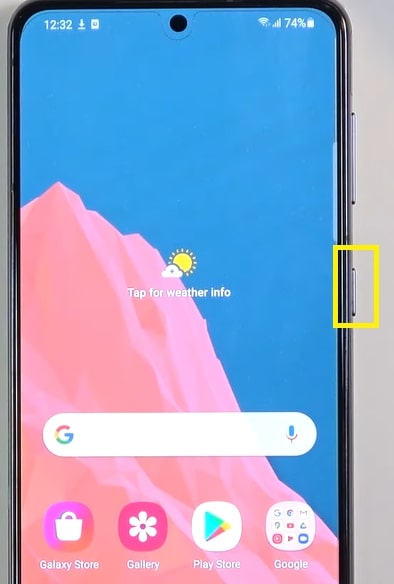
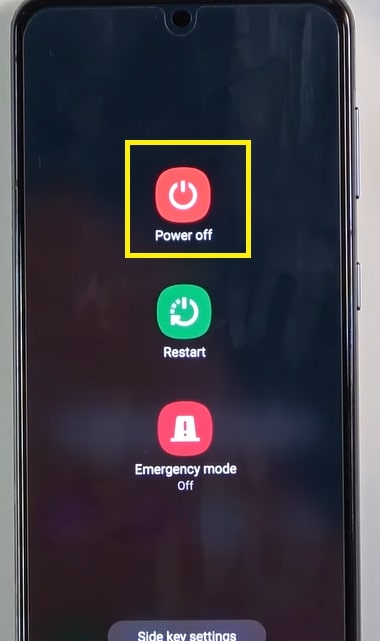
- Make a connection between your phone and a PC using a USB cable.
- Press/hold the volume up button and the side button.
- Hold until you’ve booted Recovery Mode.
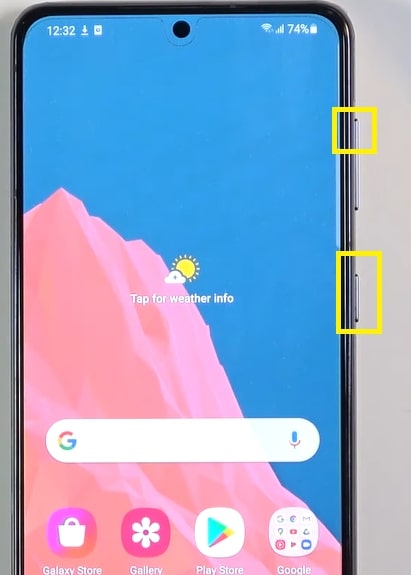
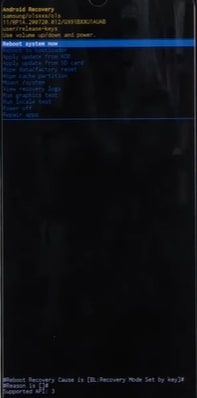
Note: Tap on the volume buttons to make your selection and tap on the side button to confirm.
- Select Wipe cache partition.
- Tap the side button.
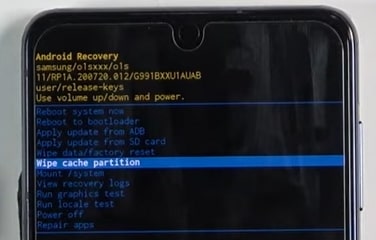
- Select Yes and tap the side button.
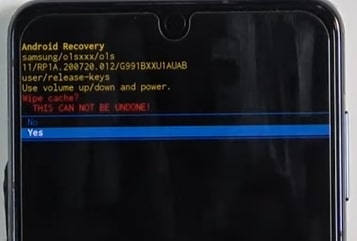
- Tap the side button to confirm the Reboot system now.
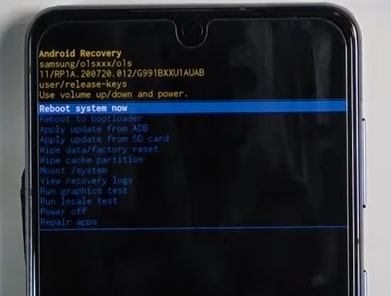
- Wait until the device is booted up.
9. Update the system software.
| Difficulty Level | Very Easy ●○○○○ |
| Number of Steps | 5 |
| Estimated Time Completion | 30 minutes |
Believe it or not, the system’s software also receives battery efficiency enhancements from being updated just like applications do. This allows your device to run smoother while cutting down on the juice it consumes.
Plus, it’s like hitting two birds with one stone. You get new security features and measures to protect your device and you’re able to get over your Galaxy Note 20 series overheating issues as well.
Follow the steps below to update the software:
- Open Settings.
- Scroll down/click Software update.

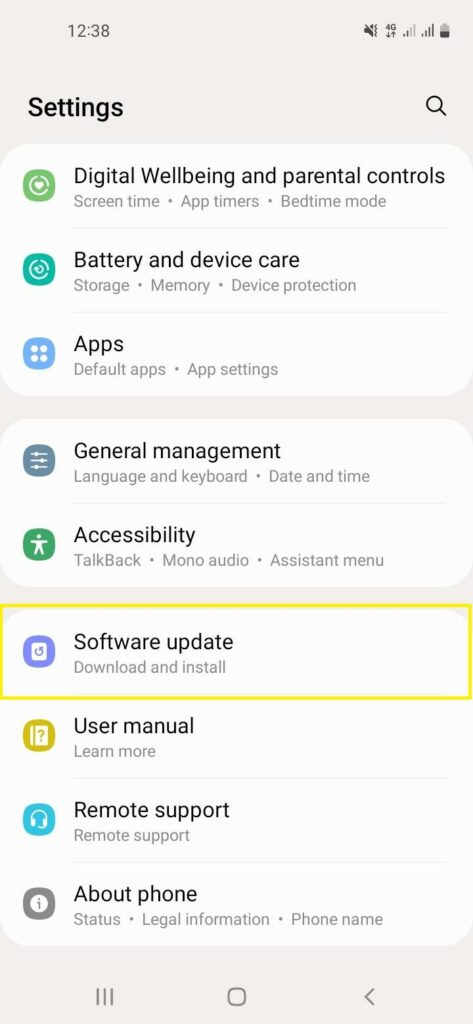
- Click Download and install.
- Wait as the device checks for existing updates.
- Download the update and click Install now.
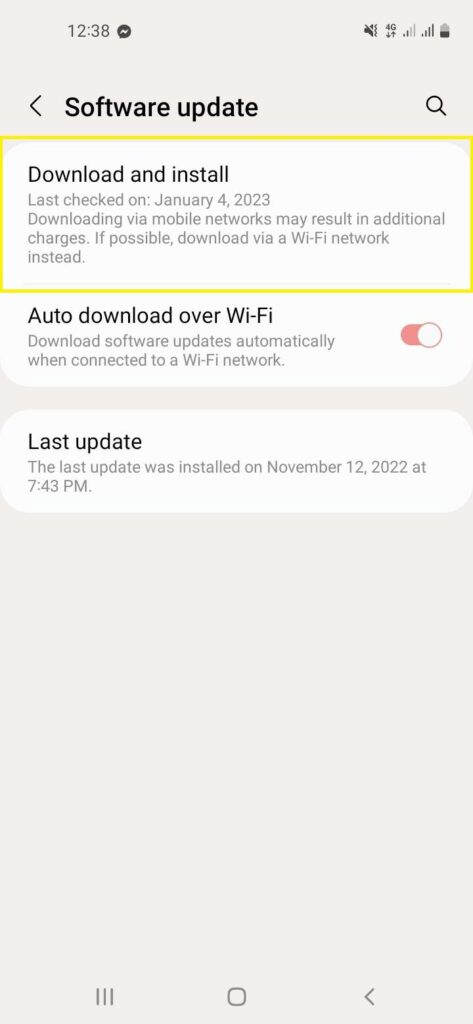
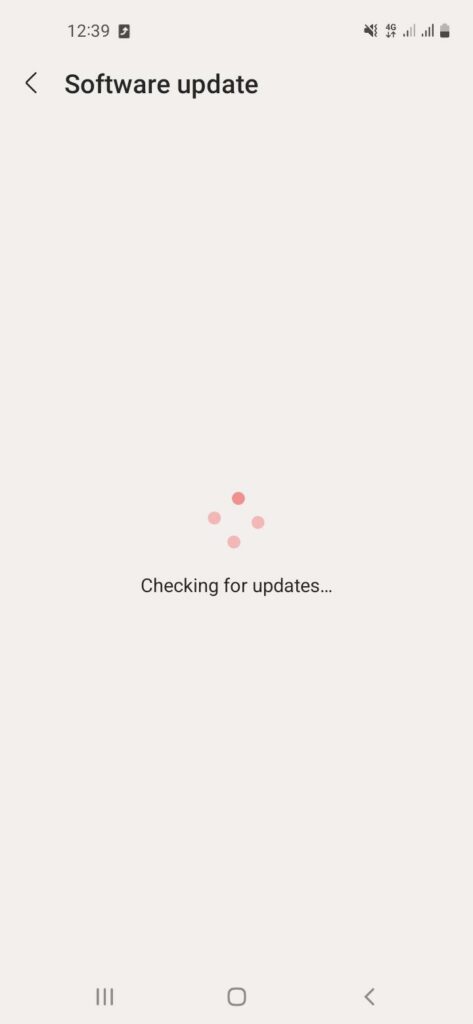
10. Reset all settings.
| Difficulty Level | Very Easy ●○○○○ |
| Number of Steps | 7 |
| Estimated Time Completion | 40 to 60 seconds |
Did resetting the app preferences not fix Galaxy Note 20/Note 20 Ultra overheating issues on your end? If yes, rather than reset the app settings, try resetting all phone settings instead.
Reset all settings using the steps below:
- Open Settings.
- Scroll down/click General Management.

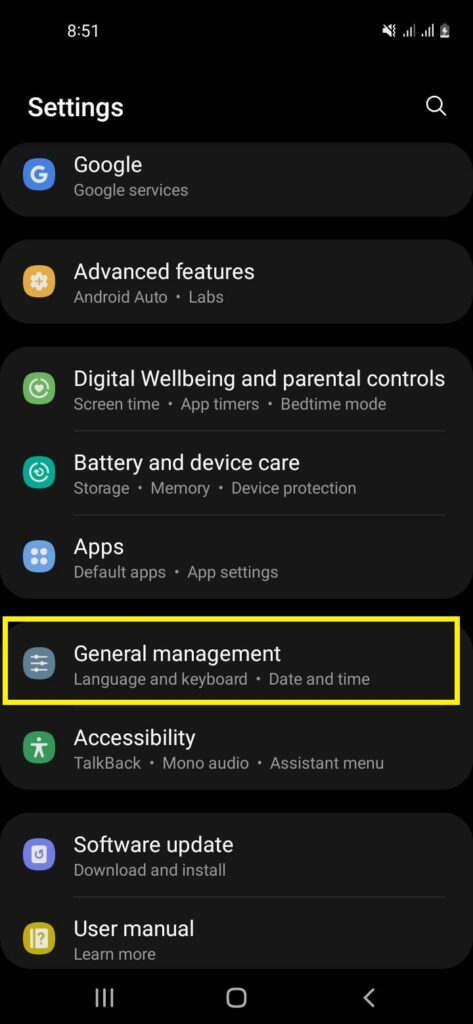
- Click Reset.
- Click Reset all settings.
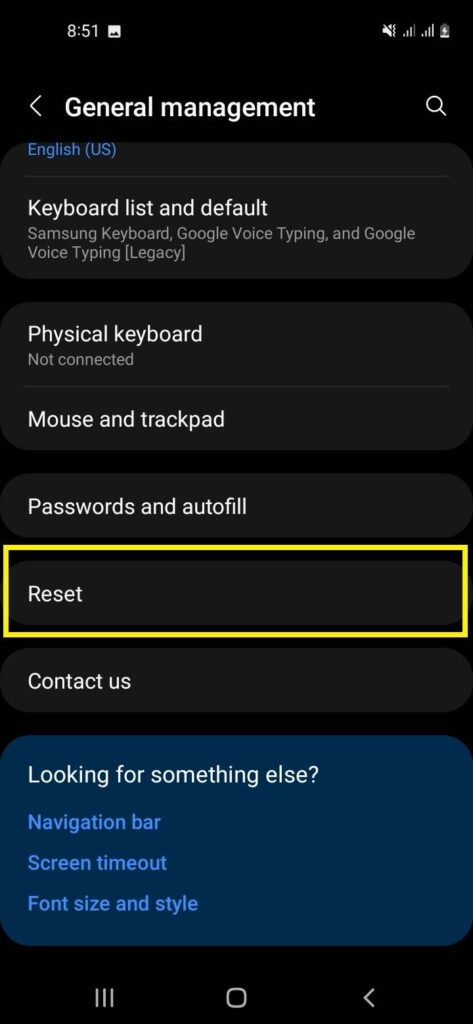
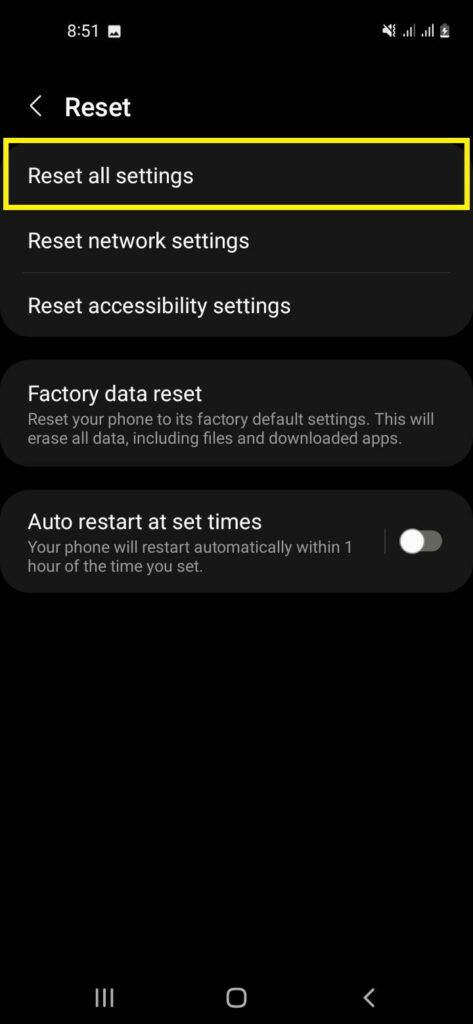
- Click Reset settings.
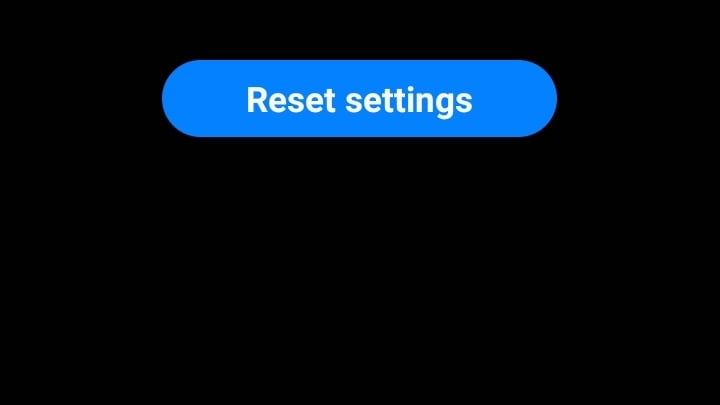

- Input your pattern.
- Click Reset.
11. Perform a factory/hard reset.
| Difficulty Level | Moderate ●●●○○ |
| Number of Steps | 13 |
| Estimated Time Completion | 10 minutes |
If all else fails, the final troubleshooting method you can try yourself is to perform a hard reset. Also known as a factory reset, this action will revert your phone to its previous state back in the manufacturing factory.
Note that this will wipe your personal data from your phone, which is why we recommend backing up your data on the Samsung Cloud or a PC for later restoration.
Perform a factory reset by following these steps:
- Press/hold the side button.
- Tap Power Off on the pop-up menu.
- Wait until the device shuts down.


- Make a connection between your phone and a PC using a USB cable.
- Press/hold the volume up button and the side button.
- Hold until you’ve booted Recovery Mode.


Note: Tap on the volume buttons to make your selection and tap on the side button to confirm.
- Select Wipe data/factory reset.
- Tap the side button.
- Select Factory data reset.
- Tap the side button.
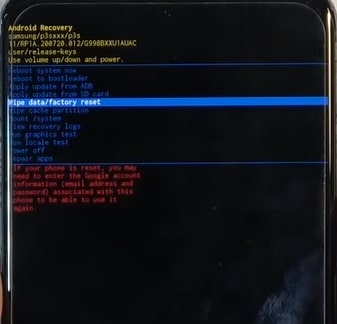
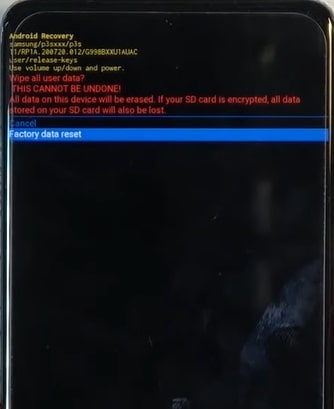
- Wait until you’ve seen “data wipe complete” on the screen.
- Tap the side button to confirm the Reboot system now.
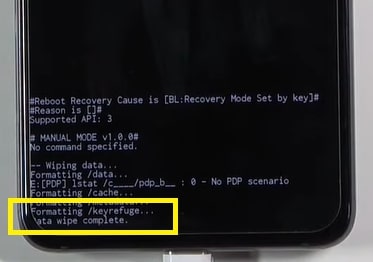

- Wait until the device is booted up.
12. Reach out to Samsung Support.
| Difficulty Level | Very Easy ●○○○○ |
| Number of Steps | 1 |
| Estimated Time Completion | 30 minutes |
Some problems are better left to the experts, in this case, to Samsung’s qualified technicians.
After finding no success with the abovementioned troubleshooting methods, the next course of action should be to reach out to Samsung Support to book an appointment with your nearest service center for a technical consultation.
Tips to Prevent your Galaxy Note 20/Note 20 Ultra from Overheating
After learning how to fix Galaxy Note 20/Note 20 Ultra overheating issues yourself, it’s equally important to understand ways to prevent this problem from happening again.
Here are some effective tips you can use as preventive measures:
- Avoid using the phone in conditions outside the recommended temperature of about 35 °C or 95 °F.
- Avoid phone usage while charging and allow it to complete the process.
- Avoid using unsupported or unaccredited chargers and cables.
- Avoid multitasking with different apps.
- Avoid long sessions of phone usage.
- Allow the phone to cool down after you use it.
- Update the software regularly to enhance the device’s battery efficiency.
A lot of it is about being practical. Sometimes, however, old habits can get in the way, so make sure you evaluate what you do with your smartphone with an active S-pen stylus on a daily basis.
FAQs About Galaxy Note 20/Note 20 Ultra Overheating Issues
Pause the activities on your phone and let it rest to cool your phone down. If you’re using your phone normally or charging, it’s natural for it to get hot.
However, if it reaches an uncomfortable level of temperature, you should immediately stop using it.
A single instance of overheating is a serious issue for your Galaxy device. Overheating is sometimes unavoidable when you’re doing important activities on your phone that require multitasking multiple applications.
It should not cause immediate damage to the battery, but you should still avoid letting it happen as much as possible to prevent irreversible damage to the battery. In short, avoid making a habit out of it.
Powering off your phone is the quickest way to lower its temperature as it shuts down all processes and applications, which relieves the processor and the battery of their burden.
Overnight charging doesn’t overheat your phone. Modern smartphones have built-in battery management features that lower the amount of electricity they receive when almost at full charge and stop it when it does get full.
Be careful, though. Apps in the background could be taking out the juice from your smartphone while charging, making the device overheat.





